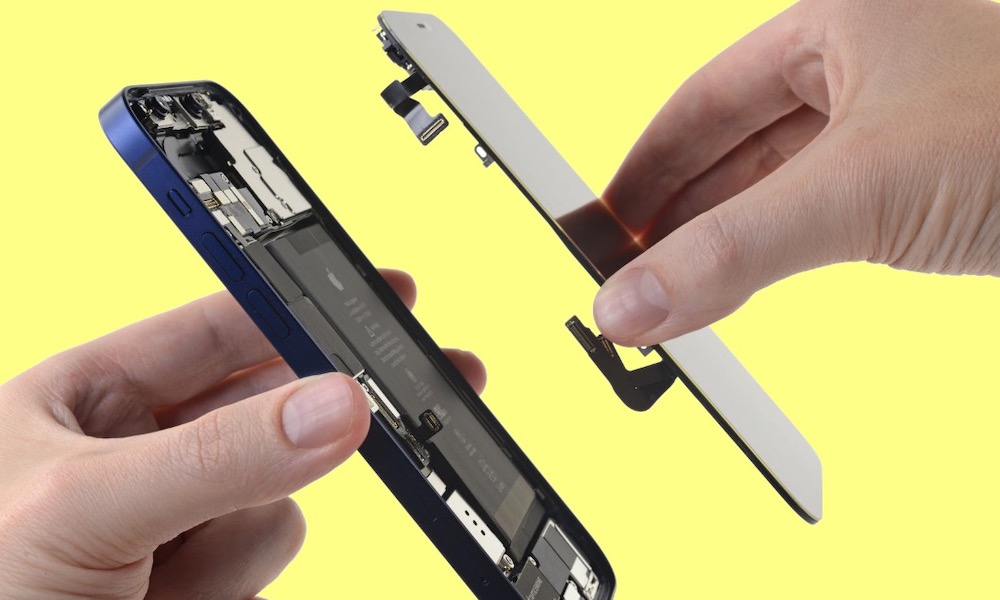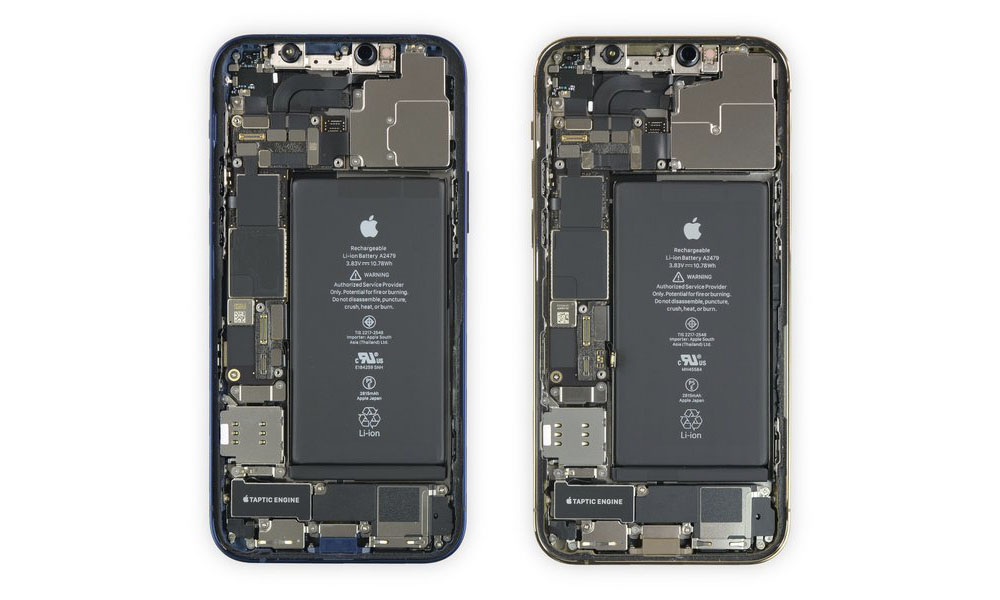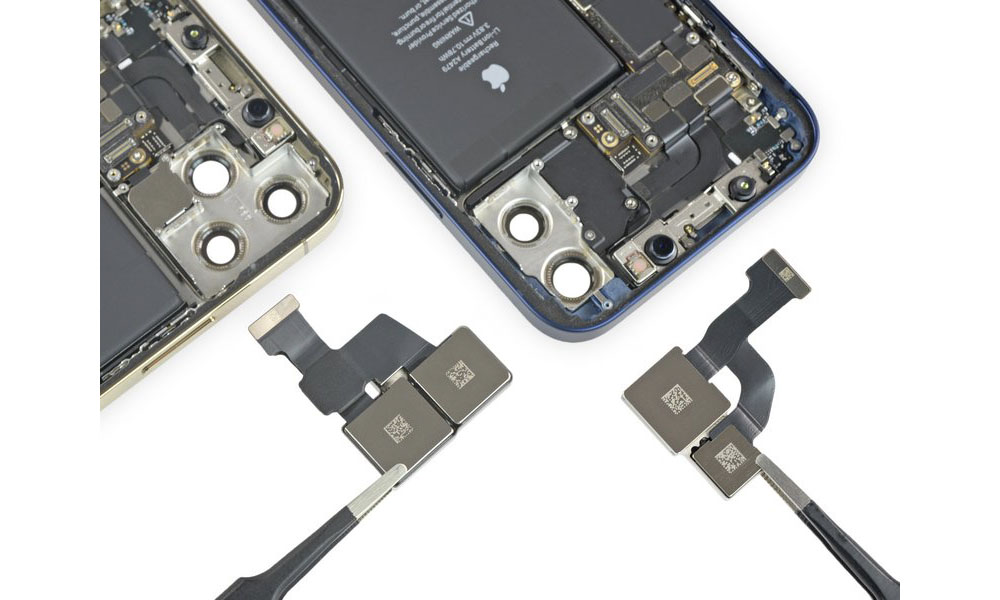iFixit Teardowns Show Surprising Similarities Between iPhone 12 and iPhone 12 Pro
 Credit: iFixit
Credit: iFixit
Toggle Dark Mode
Whether it’s drop tests, battery tests, or full teardowns, new iPhones always spark a whole new round of curiosity, and now iFixit is taking another deep peek inside Apple’s latest iPhone models with its full teardowns of the iPhone 12 and iPhone 12 Pro, which have revealed some interesting surprises this year.
Of course, we already know about much of what’s inside the new iPhone 12 models — an A14 Bionic chip, a 6.1-inch Super Retina XDR OLED display, 5G capabilities, and MagSafe wireless charging are common to both models, as are two of the cameras, while the iPhone 12 Pro gains a telephoto lens and a LiDAR scanner.
However, as we’ve learned from iFixit’s teardowns over the years, the details are often considerably more interesting than the mere tech specs, and this year it seems that Apple’s standard and pro models have much more in common than just their 6.1-inch size.
Squared Edges
Before diving into the new iPhone 12 units, however, iFixit offers a brief look at the squared-edge design, actually going so far as stacking an original iPhone 4 atop an iPhone 12 Pro, an iPhone 12, and an iPhone 11 Pro.
While we’re suckers for the nostalgia here, what’s particularly noteworthy is that were it not for the colours you’d have a really hard time telling the iPhone 12 and iPhone 12 Pro apart from this angle, which just emphasizes exactly how homogenous Apple’s iPhone family is becoming.
Diving In
iFixit proceeds to crack open the two iPhones, starting with the Pentalobe screws on the bottom (which notably aren’t colour-matched on the iPhone 12 the way they are on the iPhone 12 Pro), and then basically proceeds to follow the usual procedures, applying suction handles, opening picks, and heat, and while the opening procedure isn’t totally new, iFixit suggests that Apple may have changed adhesives in order to improve its waterproofing.
Surprisingly, even after removing both of the screens and taking a superficial look inside, it’s virtually impossible to tell the iPhone 12 Pro apart from the standard iPhone 12. In fact, it’s not until the removal of the camera shields that it becomes obvious which is which, since of course at that point the iPhone 12 Pro triple-lens system is readily apparent.
Even then, however, iFixit discovers that the two iPhones are so similar that the iPhone 12 actually puts a plastic spacer where the third camera would be on the iPhone 12 Pro, which suggests that Apple is likely using an almost identical machine process for the inside of both casings, with the only difference likely being where the actual holes are drilled.
Some of the other notable changes discovered by iFixit is the flipping of the SIM tray, logic board, and battery, likely done to accommodate the new Qualcomm 5G chips on the much larger logic board, which no longer fits beneath the cameras. The speakers are also no longer glued in the way that they were in prior models, making battery replacement much easier since the speakers have to be removed to access the battery.
Interchangeable Parts
What’s perhaps most interesting of all, however, is how many of the parts between the iPhone 12 and iPhone 12 Pro are completely interchangeable. While this perhaps shouldn’t come as a huge surprise since the same technology is used in both, it was by no means guaranteed, since even displays and batteries could have different connections.
In fact, even though Apple notes different brightness specs for the iPhone 12 and iPhone 12 Pro — 625 nits vs 800 nits in non-HDR mode — we’re left to assume that this must be an artificial limitation in some way, since according to iFixit, the Super Retina XDR OLED displays both work interchangeably when swapped between models.
iFixit doesn’t comment on whether putting the iPhone 12 Pro display into the iPhone 12 actually offers higher brightness, but it’s promised to dig a bit deeper to try and figure out what the difference is.
Since Apple sources its displays from multiple vendors, however, one probable explanation could be that some manufacturers simply can’t produce displays to the same brightness level as others, so Apple has gone with the lowest common denominator for the standard iPhone 12 models, while also ensuring that only the highest-quality displays go into the more expensive iPhone 12 Pro.
Additional parts that were found to be fully interchangeable include the Taptic Engine, the battery — which is the exact same 10.78Wh unit in both models — as well as the Lightning connector assemblies, Face ID and TrueDepth camera module, camera flash module, and quite a few other smaller components.
Repairability Score
In the end, iFixit assigned a repairability score of 6 out of 10 to both 6.1-inch iPhone 12 models, praising Apple’s decision to continue making display and battery replacements a priority, along with easily accessed modular designs for most other important components.
That said, however, as usual, iFixit was concerned with Apple’s insistence on using non-standard screws, requiring special drivers, along with the increased waterproofing measures that hamper easy access, although it concedes that as a fair tradeoff since it reduces the need for water damage repairs, which are traditionally much more difficult to deal with.
The only major strike against the iPhone 12 repairability was of course the all-glass design, and particularly the fact that damage to the glass rear back — which isn’t made from the new Ceramic Shield glass and therefore still more likely to shatter in a drop — requires “removing every component and replacing the entire chassis.”









